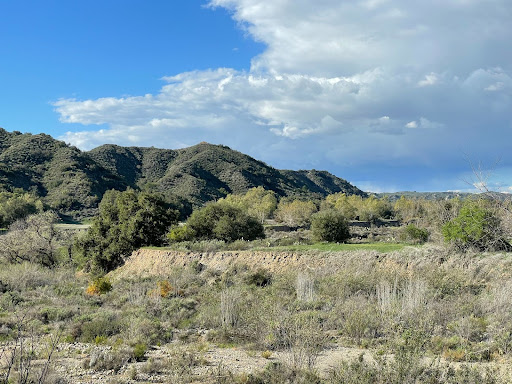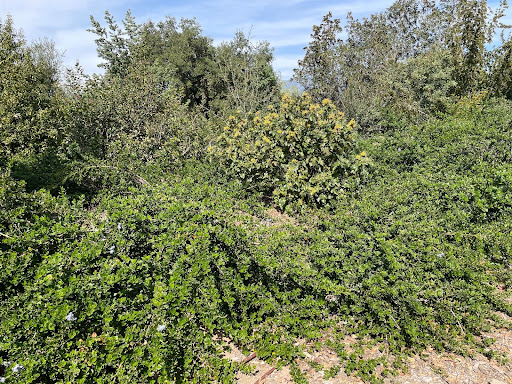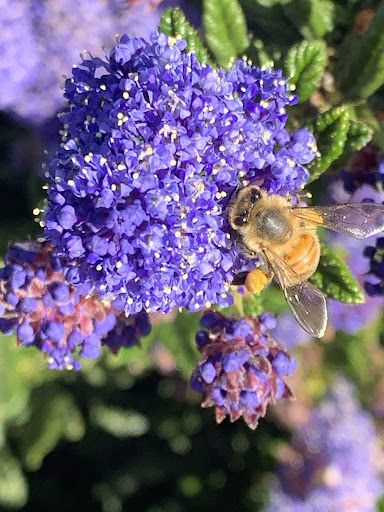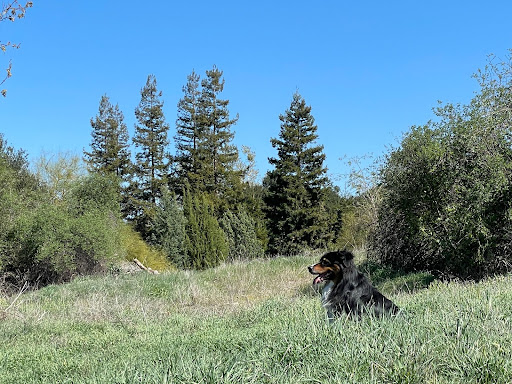March in the Natural Garden
- Posted in: Blog, Monthly Garden Advice
- Tags Garden Maintenance, Seasonal Gardening, Words by Mike Evans

March in the Natural Garden
Spring will have sprung after March 20, 2022. Natural gardens everywhere, even the wild ones planted by God himself, will be bursting into new realms of new life in the next few weeks. At this very moment, I spy a little lizard sunning himself on a downed branch, a raven clucks her guttural gurglings from a tall tree far away, a couple jays squawk in reply, and our local army of hummingbirds has apparently sent a sizeable contingent to plunder the last of our manzanita flowers.
Current events, history, review, and notes
What happened to winter, especially pertaining to rain? We logged a few cold nights and one or two decent storms, but our cumulative total for rainfall to date is only 6.57”, and the forecast offers several days of clear sailing ahead. We have more “rainy season” behind us than before us, so every bright sunny day is one step closer to 2021-22 being labeled our third “dry year” in a row.
Though our gardens are quite attractive for now, (short days, cool nights are easy on plants), an on-going dry spring may forebode unique challenges this summer. So far, each of our few rain events this season have been followed by heat waves and desiccating winds. Unless we get a series of soaking rains March through April, (gully washers don’t count) moisture deep in the ground at feeder root levels will be depleted by July… unless we charge the soil with moisture through irrigation.

Salvia apiana (White sage)
Watering
It may seem counterintuitive to water this season as the plants are not showing signs of drought stress and it just doesn’t “feel” like a Deep Soak is necessary. In a better year, rain would be penetrating November through April to provide a moisture reserve for the dry summer months. Winter precipitation. It’s like making deposits at the bank when you can, so you can make withdrawals later when there’s no money coming in. Here’s the ideal water cycle for California plants… 4-5 months wet, 7-8 months dry. Our natives, when grown in soil to their liking, with shaded root zones, a topdress layer of natural leaf litter, and soil surface microtopography to catch every drop, thrive on this moisture regime. That’s why they are the best choice for regionally appropriate gardens.
Related to Watering
In the absence of cool season rain, Deep Soak irrigations are safe and effective. Safe, because with cool soil temperatures, fungal root rot will not be a threat. Effective, because when is it not effective to stash more money in your savings account? However, it is not imperative to water in March. You can hold out for more rain, but if it has not rained enough by the end of the month (2-3” over 2-3 rain events), then be ready to give your garden a couple Deep Soaks before June, because by late April the rain window will be almost closed.
In addition to dry soil, dry leaves and dust can be problematic, especially in spring when the plants start growing. Feel free to wash off your leaves and wet the soil surface frequently with what we call Refreshing Sprinkles.
Pruning

As you see new growth elongating on fast growing plants, employ a technique called “pinching” on the new growth. Simply cut the tender growing tip off the branch by pinching it with your thumbnail and forefinger. This will cause the plant to grow fuller and bushier.
Weeding
With the scant rains, weeds have not been a huge problem this year. We are approaching a transition period. Keep winter weeds from going to seed and grub out summer weeds when you first spot them, while they are still tiny.
Mulching/Top Dress
If you have bare soil that could use a little enhancement and enrichment, March is a good time to add a top-dress. For an organic woodland look, use a chunky bark product, 3/8-5/8” coarse, about 1-2” thick. For a mineral chaparral or desert look, use a coarse decomposed granite or some other natural stone aggregate about 1” thick. You can combine these different looks in different sections of your garden so that your top-dress helps tell your garden’s story. Don’t forget, the best top-dress is the natural leaf litter the plant drops onto its root zone over time.
Feeding
Absolutely. You can extend the winter flowering season, and boost the spring bloom, plus induce healthy rooting and luxuriant foliage by feeding in spring. Use an all purpose organic plant food, granular, dry and/or liquid. There are many products available, most of which are sold for use on vegetable plants and fruit trees. These will work. Follow label instructions or use slightly less. If you have any questions, write to me at the email address at the bottom of this post.
Troubleshooting – Varmints, Pests and Diseases
Argentine ants are back on the loose after a relatively calm winter season. They are everywhere, hopefully not including your kitchen. They are harmful to plants 1) because their tunnels and nests undermine root systems and 2) because they tend or “farm” injurious plant pests such as aphid, mealybug, and scale. If you see them marching one by one up and down your branches, suspect the worst and carefully search what it is they are after. Usually you will find a plant pest with a sucking mouthpart, excreting what’s called honeydew, which the ants consume. That’s why they move those plant pest insects around (Order: Homoptera), giving them greener pastures, and protecting them from harm. Control the Homoptera with organic oils and soaps. Control the ants by flooding them out with a hose. Discourage them by not providing their favored habitat: safe, hidden locations in dry soil under rotting wood. More on this in April.
Annual Wildflowers
Good thing you sowed seeds last fall and weeded all winter. Your flowers should be just starting to bloom. What? You didn’t sow last fall? There’s always next fall, or come on by, we have a few annuals growing in small pots you can still transplant into your garden.
Adding New Plants
March is smack dab in the middle of the best season to plant natives. We have a large, diverse selection. Looking forward to seeing you here.

Ceanothus and honeybee
Phytophilia
Literally translated “brotherly love of plants,” this new section in our monthly newsletter will specifically address the “sixth sense” we can develop in our relationship to plants in general, and specifically to plants in our gardens. This month, it’s all about new growth, breaking dormancy, leaves budding, juices flowing. Connect to this.
Important Review
Deep Soak, tip prune (pinch), and apply fertilizer, watch new growth.

Engage
What a strange winter! We are seeing huge 24-hour temperature swings of 30, 40, even 45 to 50 degrees, with 30-degree mornings on days followed by 80 degree afternoons… dry day after dry day! This erratic pattern is typically a desert phenomenon and in response, our natural vegetation is taking on something of a desert look… small, hard leaves, oriented more vertically than they would be in cool wet weather, scant wildflowers blooming in dwarf proportions, and an early bud-break on sycamore, willow, elderberry and other deciduous species.
Best to dress in layers for such a time, and so far, the rain gear has gotten little use. At times, warm winds off the land make things even drier, but they tend to allow for long views into distant horizons.
Whether on day hikes in the hills or night walks with Dakota, to me it feels a lot like the desert. But in our natural gardens, it feels like whatever story is being told: forest, flowerfield, shrubland, coastal bluff, island canyon, chaparral, oak woodland, or indeed any plant community the designer might choose. This is the beauty of themed gardens, attention to horticultural details, and narratives that bring the best of all California into our everyday experience.
We’re gonna make it, rain or no rain!
From the March Natural Garden,
Mike Evans
Questions? Help is just one call or one email away. Call (949) 728-0685 or email (with pictures if you like) our special helpline: gardenhelp@californianativeplants.com